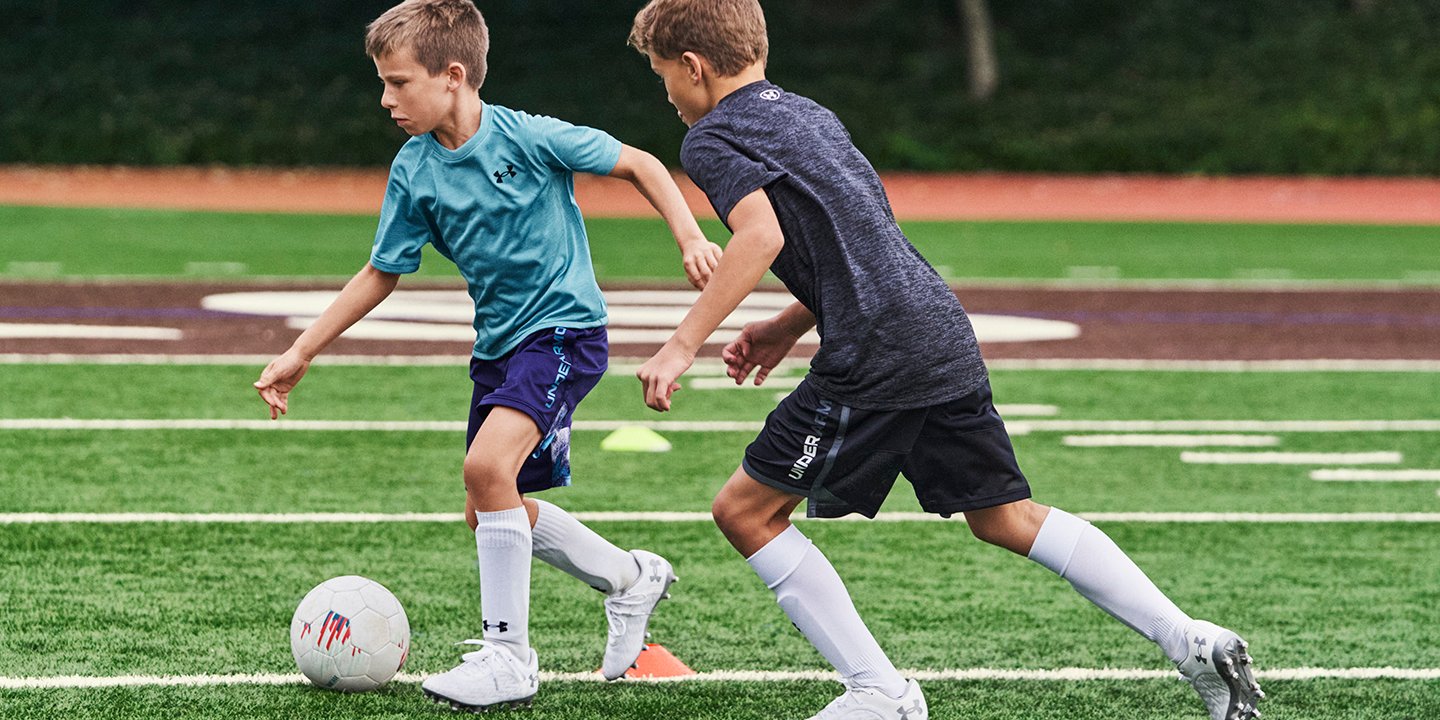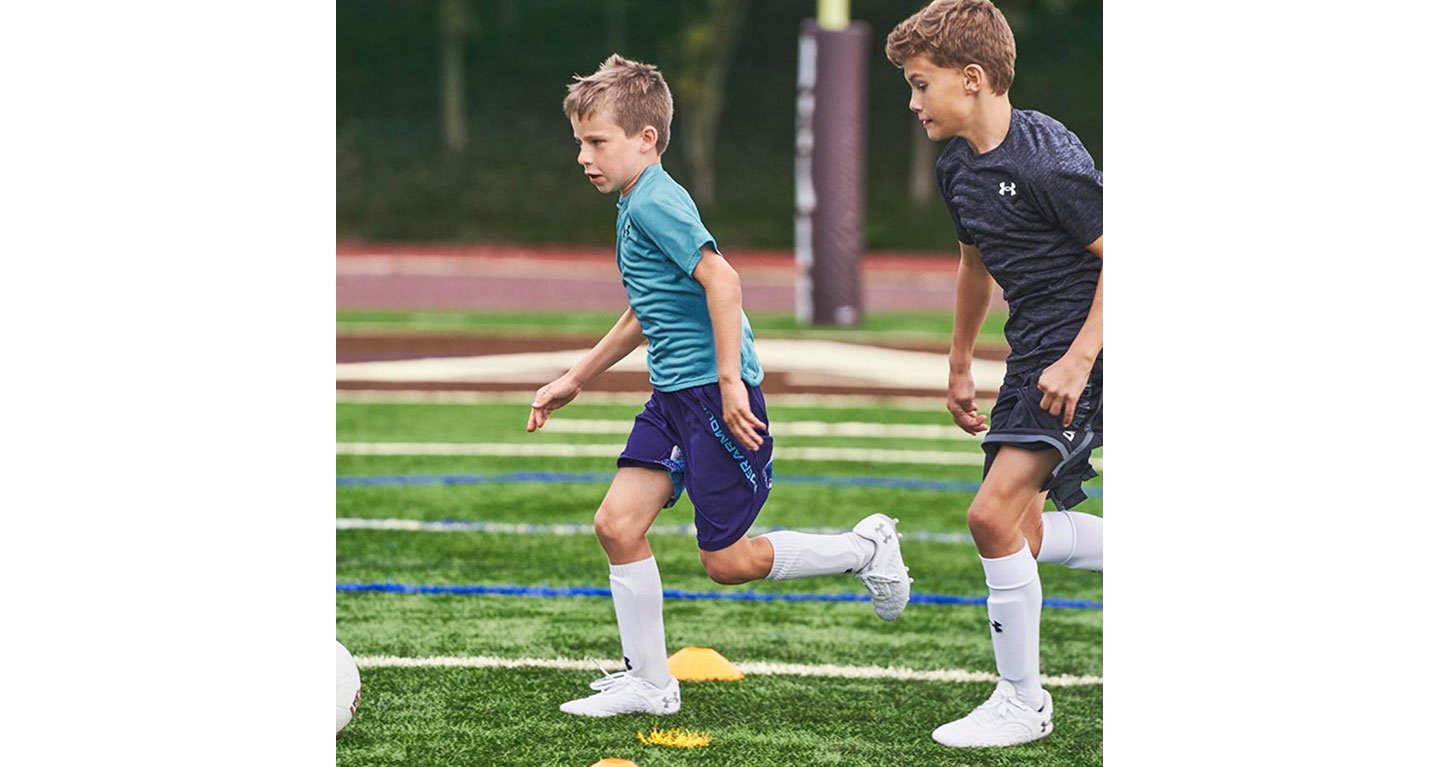How to Buy the Best Soccer Cleats
As an all-star on the pitch, you understand how important it is to have soccer cleats, or “soccer boots,” that meet your needs. A quality pair of cleats will provide traction on the field as you run, protect your feet from repeated contact with the ball, and help you stay comfortable so you can focus on scoring that next goal. They’re hands-down the most important piece of gear for a soccer player, so it’s important to get cleats that hold up throughout the entire season and stay comfortable for the many miles you run every match. Finding the perfect cleat can be difficult with so many options available, so we’ve written this guide to help you narrow down your search. We’ll cover the various types of soccer cleats, how they should fit, and more.

Difference Between Soccer Cleats & Football/Baseball Cleats
Many of you may wonder, “Can’t I just wear the baseball or football cleats I already have for soccer?” While all types of cleats are designed to keep you grounded and provide traction, each has features for a particular sport that isn’t usually helpful for other activities. Here are some of the major differences to keep in mind.


Soccer Cleats vs. Football Cleats
Football cleats are built to provide extra protection for a high-contact sport, so they’re generally much heavier than soccer cleats. They typically have higher ankle support to improve stability and prevent injury, but that extra support comes at the cost of mobility. By contrast, soccer cleats are built for maximum speed and agility, so they have less protection and support. Soccer cleats also have a different pattern of studs on the bottom than football cleats. Football cleats have a stud at the very tip of the toe, which gives extra leverage and traction for quick movements and pivots. Soccer cleats don’t have this stud because it could cause other players serious injury during a slide tackle.


Soccer Cleats vs. Baseball Cleats
Baseball cleats aren’t safe to wear on the pitch. Like football cleats, they have toe spikes. Most of them also have metal spikes for added traction, which are far too dangerous for soccer and are banned in most leagues. While safety is the biggest reason not to wear baseball cleats for soccer, there are other significant differences between them. While baseball cleats are lighter than football cleats, soccer cleats are lighter still. The lightweight design of soccer cleats increases agility and reduces the energy it takes to run. By contrast, baseball cleats are designed for short bursts of speed. Soccer cleats are also sturdier than baseball cleats. Many baseball cleats have uppers made of mesh and synthetic materials for improved breathability. Soccer cleats have uppers made from sturdier materials. The top of the upper, where the shoe most often strikes the ball, may have silicone or rubber areas. The rest of the uppers are made from materials like nylon, leather, and kangaroo leather, which are comfortable and give you a feel for the ball.


Types of Soccer Cleats
There are several types of soccer cleats available, each designed for play on specific types of fields. Bringing the wrong cleats can result in slips and damage the pitch, so make sure to bring the right pair of cleats to each match. Many players keep several types on hand so they’re ready for matches on any kind of field.


Firm Ground Cleats (FG)
Firm ground, or firm grass, soccer cleats are the most common type of soccer cleat. They’re best suited to natural grass fields with a dry surface. They typically feature conical or bladed studs, which are similar to football studs in that they’re skinny and can stick into dry ground for improved traction. The stud pattern on firm ground cleats provides extra stability and traction on firm, natural ground surfaces.


Soft Ground Cleats (SG)
Soft ground, or soft grass, cleats are designed for natural grass that’s damp, wet, or muddy. Soft ground cleats typically have conical studs which are relatively wide. For better traction on softer surfaces, their spikes are longer than those on FG cleats. They’re not suitable for firm ground because their longer spikes can slow you down and their studs can bend or break.


Artificial Ground Cleats (AG)
Artificial ground cleats, or turf soccer cleats, are specially designed for playing on synthetic turf fields. They have short studs evenly placed across the soles to provide traction without damaging the pitch. However, turf shoes don’t have studs long enough to dig into a natural grass field.


Indoor Cleats (IN)
Indoor cleats are designed for playing indoor soccer on hard surfaces such as hardwood or smooth concrete. They have a completely flat sole with tread that provides traction without damaging the playing surface. They typically have a very low-profile design for enhanced agility and speed. They’re not a good fit for outdoor fields because they’re designed to provide traction on smooth surfaces.
Types of Cleats by Position
Your position also impacts the type of soccer cleats you should choose. If you’re a forward or striker, you might benefit from cleats that have more studs around the edges of the sole, which enable sharp turns and sudden stops. For goalkeepers or defenders, cleats with a more stable stud pattern are best because they help you make quick lateral movements without slowing you down.
How Should Soccer Cleats Fit?
Getting soccer cleats that fit properly is crucial. Shoes of the wrong size will decrease your balance, speed, and agility, and can cause discomfort and injuries. Like most sports cleats, your soccer cleats should feel snug, but never tight. They should have a “locked-in” feeling around the heels and stay in place as you make quick cuts and kicks. However, they should also leave enough room to wiggle your toes. There should be about a quarter of an inch between your toe and the end of the cleat to give you a full range of movement and reduce the risk of toe injuries. Make sure the collar fits the way you’d like. Some cleats have a mid-cut or high-cut ankle collar that offers better support.
How to Take Care of Soccer Cleats
Once you’ve got your brand-new cleats, it’s important to make them last. If you don’t take proper care of them, you’ll have to go through the hassle and expense of finding another pair and breaking them in after just a season or two. Here are some tips to help you clean your cleats so they’ll last longer. Every time you get off the pitch, strike off any dirt or grass that might be stuck to the soles of your cleats. After that, wash them using a cloth or toothbrush and a mixture of gentle laundry detergent and warm water. Don’t put your cleats in the washing machine, which can damage them. Depending on the frequency of use and with the proper care, you can get two seasons out of a decent pair of soccer cleats. This is the best way to ensure their longevity and maximize their value.